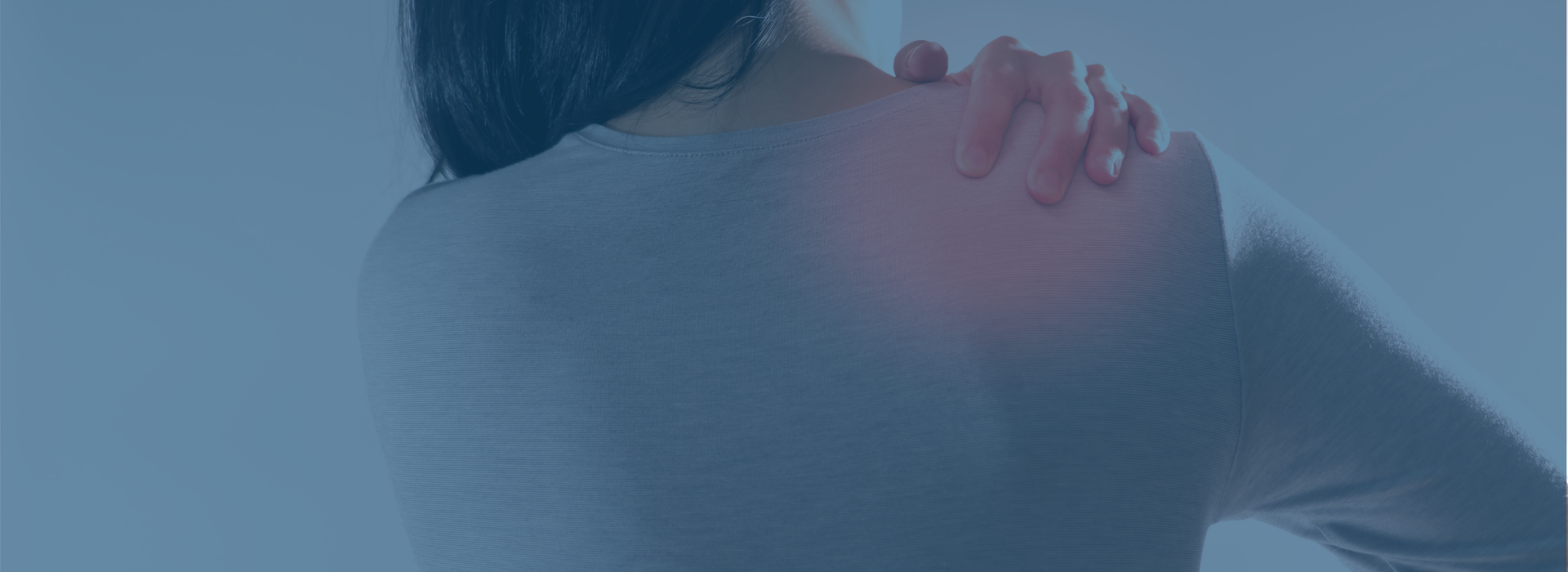Shoulder injury physio is important to the outcome of short to long term pain and function.
Shoulder injuries occur due to the joint being one of the most used joints in the body and easiest to destabilise.
Coupled with being highly mobile joints, the type of injuries that can occur can range from acute dislocations, to long term shoulder pain and instability problems. All of which can be managed effectively through Physiotherapy.
Responsible for providing movement to our arms, the shoulder is the main structural connection between the upper limb and our body.
Consisting of the scapula (shoulder blade), humerus (upper arm) and clavicle (collar bone), the shoulder is the most mobile joint in the body. And so is easily injured through sport, work or daily wear and tear.
Conditions that can benefit from shoulder physiotherapy:
Shoulder Dislocation Treatment
Subacromial Bursitis Physiotherapy
PRIMARY FUNCTION OF THE SHOULDER
The key function of the shoulder is to provide and allow movement of the upper limb. However, as it remains the only structural connection between the arm and torso, it is also largely responsible for the strength and stability of the upper limb.
Due to the mobility it allows, the shoulder is also arguably the least stable joint of the body, with very small bone-on-bone contact area, the labrum and several ligaments to prevent excess movement. Muscles therefore aid in strengthening the joint, as well as providing movement.
The tendons of the rotator cuff muscles wrap around the joint and create a kind of ‘capsule’ of their own, which increases stability and helps prevent injury. With the limited support the muscles and other structures provide, the shoulder is a common injury in sports, when working and can be privy to degenerative changes or injuries as we age.
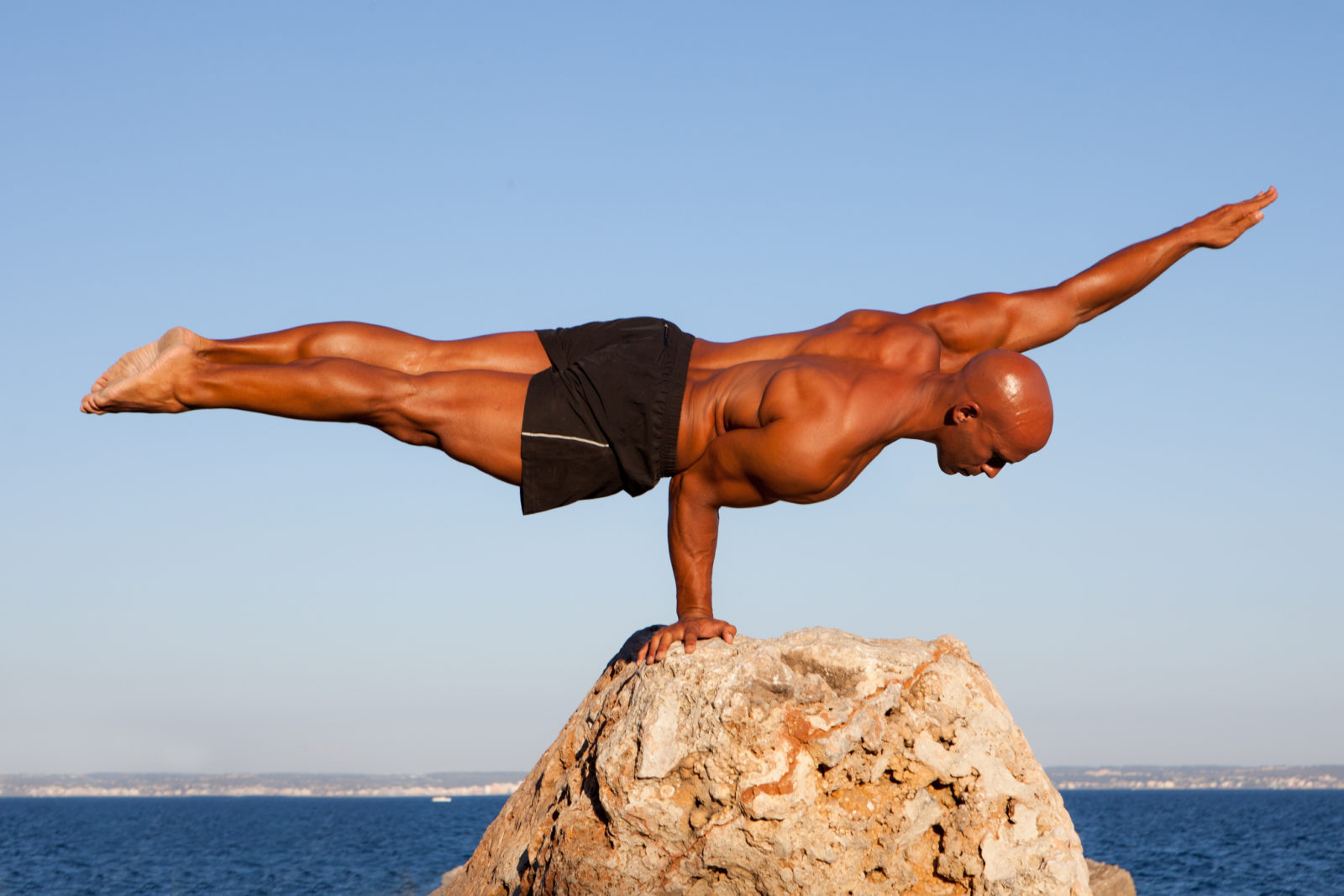
SHOULDER ANATOMY, INJURIES & SYMPTOMS
With the large mobility of the joint, and its importance in arm or body movements, the shoulder is one of the most consistently injured body parts. Primarily injured through a breakdown of soft tissue, main injuries include rotator cuff damage, dislocations and even arthritis, all of which can be moderated with shoulder injury physio.
Complex in its structure, the shoulder is made up primarily of the scapula, humerus, clavicle, a range of ligaments and a vast array of muscle attachments. The shoulder complex is made up of three separate joints, that between the sternum and clavicle (sternoclavicular joint), a second between the clavicle and scapula (acromiclavicular joint) and the third between the humerus and glenoid cavity of the scapula (glenohumeral joint). These joints help provide the full range of movement to the arm, however the glenohumeral joint is the base of most movements.
BONE FRACTURES
Most injuries to bones will be fractures, though many people argue that fractures and breaks are slightly different they are in fact the same thing. Fractures can occur through force transfer through the upper limb, such as in a car accident or when falling onto and outstretched limb, or due to direct trauma to the bone, for example in a contact sport.
CLAVICLE
The clavicle is the long, flat bone which is commonly called the collar bone. It connects the edge of the scapula to the sternum, and is part of the acromioclavicular and sternoclavicular joints.
The clavicle is integral in providing stability to the shoulder complex, aiding movement and protecting the brachial neural plexus, underlining blood vessels and top of the lungs. Clavicular fractures are the most common paediatric fracture, however they only make up a small percentage of adult fractures.
A clavicular fracture will most commonly occur through a fall onto the lateral shoulder, though less commonly from a fall onto an outstretched arm or from direct trauma to the bone. The most common clavicle fractures occur in the middle third of the bone and are easily identifiable due to the superficial position of the bone and the fact that muscle activity can cause displacement of relative ends of the bone. The fracture will present with swelling, bruising or inflammation, tenderness around the area and limited movement through the upper limb. Fractures will also often be visible with a bump obvious through the skin.
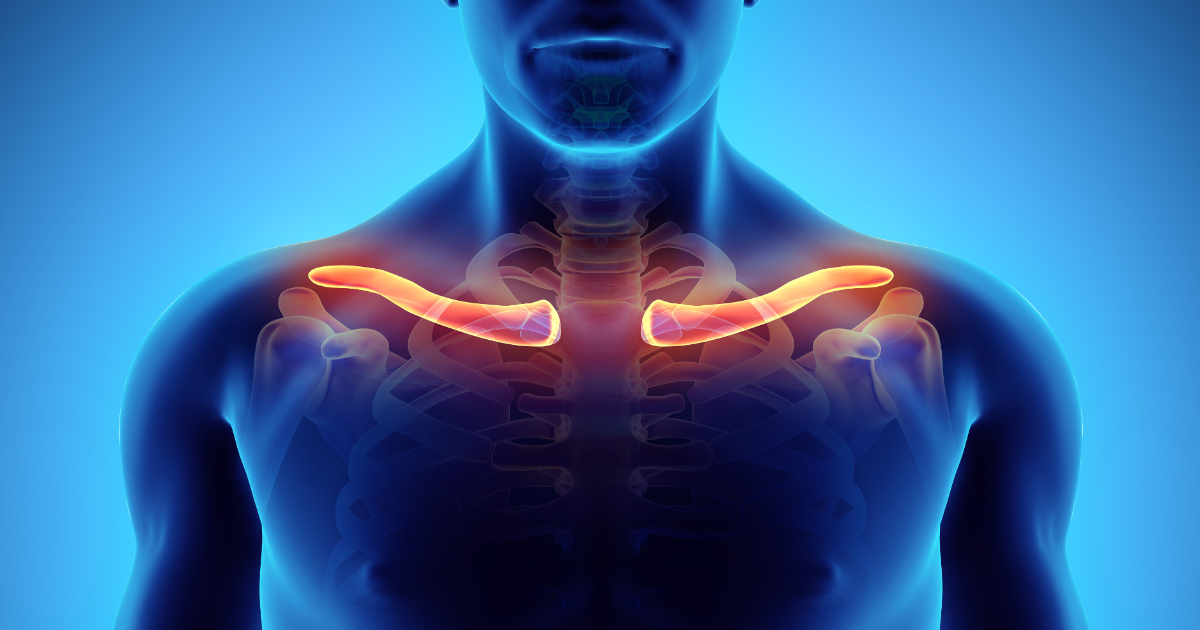
WHAT IS THE TREATMENT OF CLAVICLE FRACTURE?
It is important to attend shoulder physio sessions for assessment and treatment following a clavicle fracture, as due to the conservative treatment of most fractures, there can be a range of ongoing issues present or the changes to the body structure can mean changes to how your muscle work or feel.
Medical treatment of these fractures will often utilise immobilisation and/or, somewhat more irregularly, surgery. As immobilisation, will cause muscular atrophy and a non-union fracture can mean changes in the structure or slight differences in the function of a muscle, physiotherapy will aid in full recovery and allow you to have complete function when returning to work, sport or play.
SCAPULA
Our scapula is the connection between our body and upper limb. Commonly known as the shoulder blade, the scapula is an attachment for a number of our back muscles, and so affects arm movement by changing the position of the glenohumeral joint. Part of both the glenohumeral and acromioclavicular joints, scapula fracture is less common than either humerus or clavicle fractures, as it is in a relatively protected position and difficult to impact upon.
MECHANISM TO LOOK FOR IN A SCAPULA FRACTURE
There are a range of ways a scapula can fracture, however the most common are fractures to the scapular body or spine or neck. The mechanisms for the injuries are quite similar however the body or spine fractures are far more common. Fracture of the scapular spine will generally occur through a severe, direct trauma to the scapula, such as in a heavy fall or car accident. The injury will present with swelling and inflammation (discoloration or bruising), it will also be very tender to touch. If the scapular body or spine is fractured, the patient will often have to hold their arm in close to the body to minimise pain and any attempts to move it away from the body will cause large increases in the pain.
Similarly, the key mechanism of scapular neck fracture is a direct blow to the front or back of the shoulder, such as in a rugby tackle. These fractures can be more common in sport, with symptoms including swelling, bruising and tenderness through the injured area, especially over the lateral (outer) aspect of the humeral head. As with most other scapula fractures injured persons will hold their arm close to the body, however any movement will cause significant pain when the neck is fractured.
Other fractures that can occur in contact sports can include acromion or coracoid fractures, each which are caused by blows to the superior aspect of the shoulder such as in a tackle or hit.
WHAT IS THE TREATMENT OF SCAPULA FRACTURE?
As with clavicle fractures, physiotherapy will be important to ensure a complete recovery from a scapular fracture. As it is a movement centre, immobilization or deformation of the scapula will cause changes in how the muscles work, how strong they are and can increase tightness. Our Pivotal Motion physiotherapists will be able to help make sure that muscular activity is correct and can help design a re-loading program to get you back to living as soon as possible.
HUMERUS
The humerus is the bone of our upper arm, spanning from the shoulder to our elbow. As it attaches to our shoulder at the glenohumeral joint, the humerus, especially the proximal head, is the site of a lot of muscular attachments. It is movement of the humerus which allows us to lift and move our arm, and so it is integral to many of our daily tasks. Fracture of the humeral neck is what people usually call a broken shoulder and can severely limit our ability to complete day-to-day tasks.
Fracture of the humerus will usually occur via a fall onto an outstretched arm though less common causes include fall onto a bent elbow or the point of the shoulder, or even direct trauma to the upper arm such as in a motor vehicle accident. The fracture will present with acute pain, loss of function of the upper limb and swelling, bruising and inflammation.
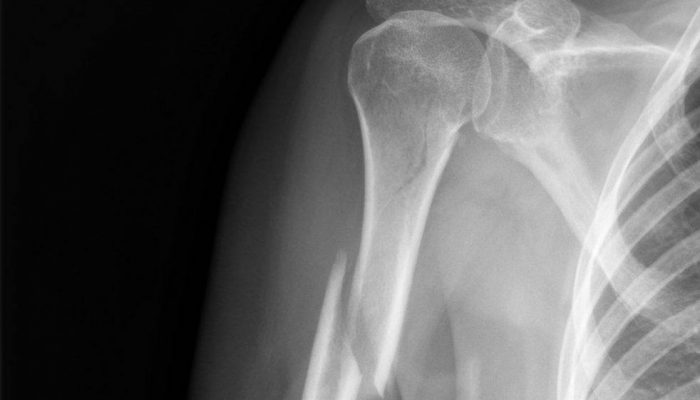
WHAT IS THE TREATMENT OF A HUMERAL FRACTURE?
Shoulder Physiotherapy treatment will be incredibly important to guarantee a good recovery for a humeral fracture. As there is often multiple fractures, activation of muscles can cause deformation or abnormal healing of the bone. In addition, as there will be a significant period where the limb is immobilised, it will be important to consult a physiotherapist on a reloading program to make sure that muscular strength and size is regained, and that muscles activate properly to guarantee good movement.
Tightness or stiffness will also occur around the joint, therefore a shoulder physio will help to relieve pain and get full function back as soon as possible.
ROTATOR CUFF INJURIES
The rotator cuff is a term used to describe a group of muscles which act to stabilise the shoulder. The rotator cuff muscles cross the shoulder joint to act as a compressive cuff to bring the shoulder joint into contact whenever the shoulder is moving. The four muscles which make up the rotator cuff are the: supraspinatus, infraspinatus, subscapularis and tere’s minor, a tear to one of these muscles is a rotator cuff tear.
A rotator cuff tear will occur through two main mechanisms. The first is an acute traumatic event. This will occur when the rotator cuff muscles and tendons are stressed beyond their ability to resist, whether through lifting a heavy object awkwardly or falling on an arm, these injuries can often be coupled with other injuries such as dislocation or fractures within the shoulder. The second mechanism for rotator cuff tear is repetitive microtrauma injuries. Repetitive microtrauma can occur by regular stress being placed on the muscles without granting them time to fully recover, or a decreased ability to repair tendons as we age.
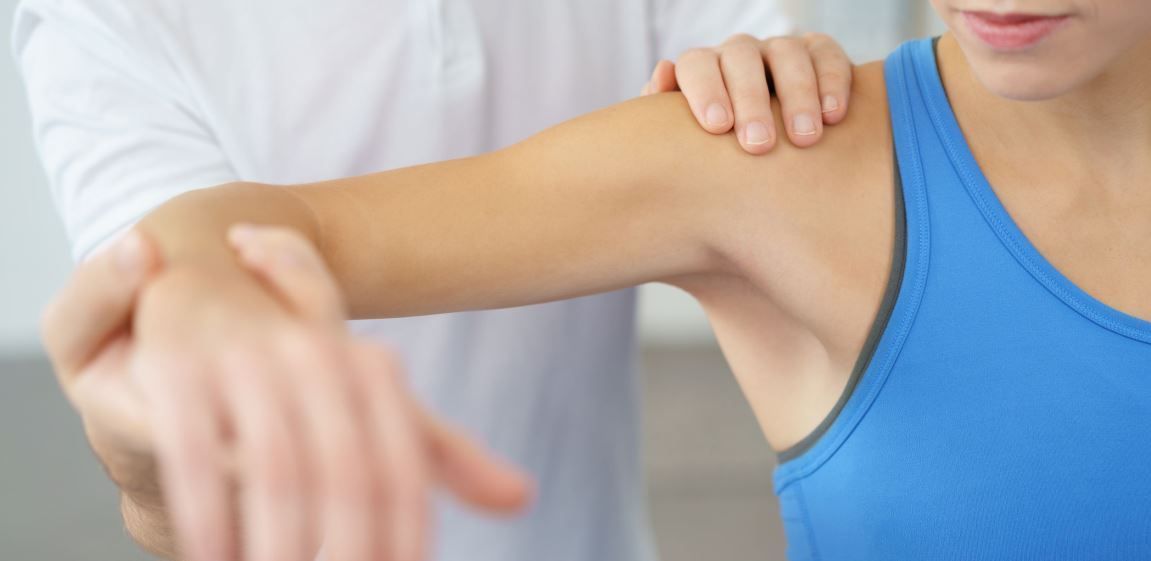
WHAT ARE THE SYMPTOMS AND TREATMENT OF ROTATOR CUFF TEAR?
The symptoms of a rotator cuff tear will be different depending on the mechanism of injury. If resulting from a single traumatic event, there will be acute pain at the joint, with immediate weakness and possible a snapping noise or feeling. Though gradual rotator cuff tears can be asymptomatic, not presenting with pain, most patients will identify a dull ache or muscular weakness and pain, especially when the arm is raised above shoulder height.
Physiotherapy will be incredibly important to help in decreasing pain and increasing function. It will be important to attend physiotherapy so that your practitioner can identify the extent of the injury so that you can move forward in the treatment of the injuries, minimising pain and then prescribing a gradual reloading program to re-strengthen the joint and allow full range of motion.
LABRUM TEARS
As dicussed previously, the shoulder is a shallow joint, this allows its mobility however also means the decreased stability. The ligaments and rotator cuff help to increase stability; however, the glenoid labrum is one of the most important structures of the joint, increasing the surface area and depth of the joint, therefore greatly improving stability.
The labrum is a small fibrocartilaginous tissue which provides a rim to the glenoid cavity, increasing stability and providing attachment for several ligaments.
Injury to the labrum most often occurs due to traumatic force applied to the joint or from repetitive strain from overhead or throwing activities. Common mechanisms of injury include, fall onto an outstretched arm, direct trauma to the shoulder, fast or heavy movements of the arms over shoulder height and shoulder dislocations. These injuries are common in athletes who do a lot of activity above shoulder or head height, such as weightlifting or throwing events.
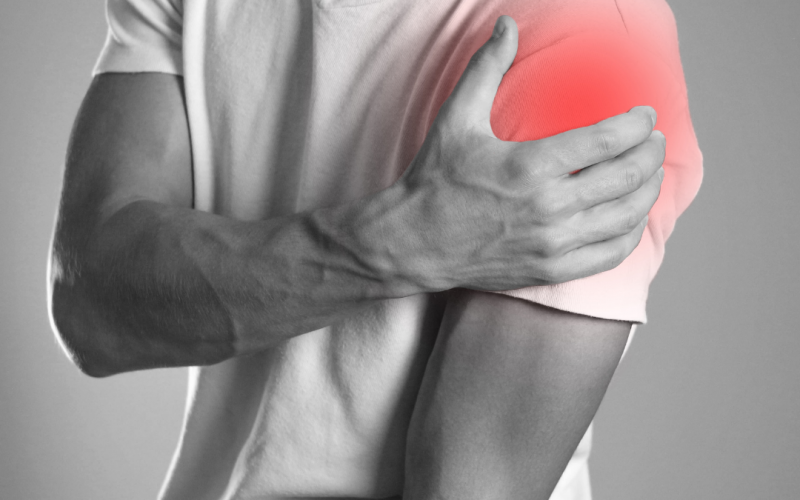
WHAT ARE THE SYMPTOMS AND TREATMENT OF LABRUM TEARS?
Labrum tears will present as a loss of function of the shoulder, instability, weakness and limited range of motion; pain with movement and lifting objects; feelings of the catching, popping or grinding in the joint throughout motion.
There are different treatment strategies for a torn labrum depending on its severity. Conservative treatment will include shoulder/rotator strengthening exercises, if extensive enough however the injury may require surgical intervention. In either strategy, the injury will require physiotherapy to ensure complete recovery and to minimise the likelihood of re-injuring the labrum.
LIGAMENT INJURIES
Ligament injuries are quite common for the shoulder. Often caused through falls, repetitive strain or contact sports, these injuries can greatly impede function, limit mobility and stability, and lead to a range of further complications.
The ligaments most often injured are those stabilising the acromioclavicular (AC) joint. The AC joint is where the lateral edge of the clavicle and the acromion of the scapula meet. It is easily identified as the ‘point’ of the shoulder, slightly protruding near the outside of the shoulder where it can be felt and seen.
The joint is supported by a joint capsule and further by the acromioclavicular and coracoclavicular (trapezoid and coracoid) ligaments. Injury will often occur when a force is applied directly to the point of the shoulder, such as a tackle if rugby or a fall, but can also occur from a fall onto an outstretched arm.
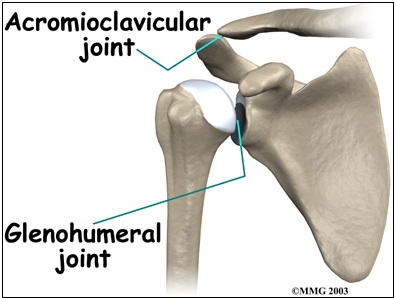
WHAT ARE THE SYMPTOMS AND TREATMENT OF LIGAMENT INJURIES?
Symptoms of the injury will include pain, initially this may be general, encompassing the whole shoulder but with time will become specific to above the site of injury (at the end of the collar bone). Pain will increase or become present when trying to move the arm, especially when trying to raise it above shoulder height. Swelling will also occur and depending on the extent of the injury some deformation, where the joint has separated and a lump is raised.
As with most ligament injuries, it is important to consult with your physiotherapist if you have been diagnosed with or suspect an AC joint tear. AC tears, especially lower grade tears, will often be conservatively treated with prescription of gradual loading joint stabilising and strengthening exercises that will be effected by your physio to ensure a complete and timely recovery and return to duties.
JOINT DISLOCATION OR SUBLUXATION
A shoulder dislocation occurs when the humeral head is completely forced out of the glenoid cavity, or socket, and usually doesn’t return until forcefully repositioned. A subluxation is a similar injury, except the humerus moves partially out of the joint and then returns to its natural position. Both injuries are very painful and are often coupled with ligament or tendon damage and even bone fractures.
Dislocation can occur either anteriorly or posteriorly, the humerus exits the socket out the front or back respectively. Anterior dislocation is far more common, making up almost all incidence of shoulder dislocations and will usually occur due to falls onto an outstretched arm or a blow to the area, such as in contact sports or falls. These dislocations are called traumatic shoulder dislocations and often can be coupled with fractures of the proximal humerus.
WHAT ARE THE CAUSES AND SYMPTOMS OF SHOULDER DISLOCATIONS?
Other common causes of shoulder dislocations are associated with ligament laxity or looseness. Whether due to hypermobility from genetics, or repetitive strain from sports or physical activity, loose ligaments will decrease the ability of the rotator cuff to stabilise the shoulder, increasing the likelihood of dislocation. Both genetic hypermobility and sports related laxity can be managed by shoulder stability programs and rotator cuff strengthening exercises.
The main symptoms of a shoulder dislocation will be acute, intense pain and deformation, the shoulder won’t look right. It is important to pay attention to any warning signs around the shoulder, as there will generally be indications of susceptibility to dislocation before the actual event. A simple loss of function, weakness through normal ranges of motion or tightness when undertaking normal activities, even when not painful, can indicate an increased likelihood of dislocation or subluxation.
HOW CAN PHYSIOTHERAPY HELP MY SHOULDER?
Physiotherapy is incredibly important for these injuries to ensure proper and complete recovery. Though each injury will differ slightly, physio can aid in making sure that there is a correct process of healing and to work on a rehabilitation program that will allow you to execute full recovery goals in a timely manner to get you back to health as soon as possible. The treatment of exercises may include:
- Manual therapy (soft tissue massage and trigger pointing).
- Joint mobilisation.
- Stabilisation exercises
- Education about what is a normal experience with shoulder pain.
- Taping or brace support (especially important in recovery from ligament ruptures).
- Exercise programs for rehabilitation or pre-habilitation.
- Ice or heat treatment.
- Work or activity modification advice and referral.
- Dry needling.
- Gradual return to work program.
Pivotal Motion Physiotherapy has online videos of taping and the shoulder is a highly popular one.
Exercise programs will be of key importance during rehabilitation for all shoulder injuries due to its large movement responsibilities. As it is a major movement centre and important for stability, to restore full function for work, sport and general living, the shoulder will require correct and gradual reloading otherwise further complications can occur.
When addressing your recovery, our physios will plan and prescribe a program which will help to remedy current injuries and minimise the likelihood of them occurring again in the future. For adolescents and young athletes who are experiencing repetitive strain it is important to strengthen the rotator cuff. Our adolescent strength and conditioning class addresses issues such as these, working to correct imbalances and minimise injury risk in our clients.
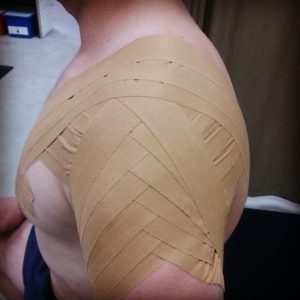
SHOULDER INJURY AVOIDANCE & RECOVERY
Due to its connective nature, a shoulder injury can severely impact the use of the arm, as well as upper body movement. The complexity of the shoulder, particularly the rotator cuff, often requires a significant amount of time in order to be completely healed. If significantly injury, a sling may be prescribed by a doctor so the joint can properly heal.
WARM UP
Warming up is essential for injury avoidance, particularly in sports that require full use of the shoulder. This helps with activation of the muscular structures that stabilise the shoulder and keep the good positioning.
IMPROVE POSTURE
Improving posture can also assist in shoulder recovery, as the weight is shared with areas such as the back, allowing the shoulder to recover quicker. Pivotal Motion Physiotherapy likens this to having “good real estate positioning”. If you don’t have good positioning you won’t have a sound return back on your investment.
INCREASE MOBILITY AND STRENGTH
Along with physiotherapy treatments, slowly increasing the shoulder’s mobility and strength will assist with preventing future injuries. Rather than jumping back into the same workout routine or sport, selecting a lighter workload can allow the shoulder joint to slowly build up strength and stability, enabling you to further reduce the likelihood of injury in the future.
CONSULT A SHOULDER INJURY PHYSIO EXPERT
Consulting a physio will allow for a proper prescription of exercises and load adaption to your particular injury, this will ensure timely and most importantly complete recovery. Attention also needs to be paid to future loading, a physio will be able to identify exercises that will help minimise risks of re-injury and further complications.

